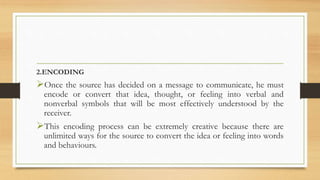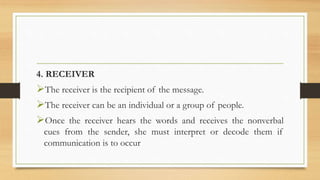The document discusses the communication process and its key components. It describes communication as a dynamic, ongoing process without a clear beginning or end. The main components that make up the communication process are the source/sender, message/content, receiver/audience, goal/purpose, medium/channel, feedback, and environment/context. It then discusses various barriers that can interfere with effective communication, including physical barriers, semantic/language barriers, organizational barriers, gender barriers, socio-psychological barriers, perceptual barriers, and emotional barriers.
























